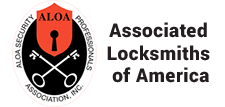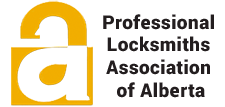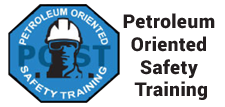Roll Shutter Glossary of Terms
Courtesy of DASMA
A B C D E F G H I J L M N O P R S T VA–Go to Top
Access Panel
An opening in a ceiling for access to tension adjusting wheel and to drive mechanism (motor, crank, chain hoist). Furnished by the ceiling subcontractor or general contractor and not by the door manufacturer
Adjusting wheel
See Tension Wheel
All Weather Door
A rolling service door having all the weather-stripping features, consisting of guide weather-stripping, hood baffle and bottom astragal
Astragal
A compressible or deformable seal provided on the bottom edge of a door
Authority Having Jurisdiction (AHJ)
The organization, office, or individual responsible for approving equipment, an installation, or a procedure
Automatic Closing Device
A device, that causes the door or window to close when activated by a fusible link or detector
Automatic Fire Detectors
See Detectors
B–Go to Top
Backroom
Amount of clear unobstructed space extending back from the face of the wall
Barrel Assembly
A cylindrical horizontal member at the head of the opening that supports the door curtain and contains the counterbalance springs
Barrel Ring
A component attached to the counterbalance pipe or barrel, which is used to increase the curtain wrap diameter and which is attached to the curtain top slat
Bar Stop
See Wind Bar
Base Plate
Optional plate mounted on the floor to distribute weight from a framing system supporting the door
Bellmouth
Flared upper portion of guides to ease entry of curtain into the guides
Between Jamb Mounted
Type of mounting where the guides are positioned between the mounting surfaces and not on the surface (interior or exterior) of the wall
Bottom Bar
A reinforcing member at the bottom of a curtain or curtain panel
Brackets
Plates bolted to the wall or to extensions of the guide wall angles that serve to support the barrel and form end closures for the hood
Brush Seals
Term used to refer generically to the use of brush filament material either in use as a weather-seal or when used as smoke seals for smoke and fire doors
Brush Weather-Stripping
Weather-stripping for use on all configurations of doors to close the gaps at jambs and header. Brush material can be UL listed for "fire door" use
C–Go to Top
Cable Sensor Edge
An edge that uses two cables inside a standard neoprene loop astragal. Upon connection with motor operator, a sensing field is established between the two cables. Any disturbance to this field causes the motor and door to stop and reverse (or stop)
Chain Hoist
A mechanical device used to raise and lower the door by use of hand chain
Charge Pin
A metal pin used to lock tension wheel after proper spring tension is applied
Charge Wheel
See Tension Wheel
Closed Position
A position of the door curtain with the underside of the bottom bar, including an astragal or sensing edge in contact with the sill along the entire width of the opening
Counter Shutter
A door which closes on a counter-type sill
Counterbalancing
A method by which the hanging weight of the door curtain is balanced by the helical torsion springs or weights
Counterbalance Assembly
An assembly consisting of torsion springs, spring anchors, and a shaft, which is positioned inside the barrel assembly
Crush Plates
Bearing plates provided where doors are mounted on wall units with hollow cells to accommodate through-wall bolts to prevent crushing of the hollow wall
Curtain
Interlocked slats assembled together.
Curtain Slats
Formed or extruded members that comprise the curtain on a rolling door
Cycle
An action on the door from the fully closed position, to the fully open position, and returned to the fully closed position
Cylinder Lock
Key-operated locking device located on the bottom bar
D–Go to Top
Detectors
A device suitable for connection to a circuit that has a sensor that responds to a physical stimulus such as heat or smoke
Door/Grille Combo
Combined assembly of a rolling service door and a rolling grille door sharing guides and common bracket plates. Allows full security when required and ventilation with door opened and grille closed
Double Throw Lock
Center locking device that throws a locking bar into both guides, mounted on bottom bar
Drive Gear
Large gear for chain- or crank- operated units. It is directly fastened to the door shaft on the drive side bracket plate
Drive Plug Assembly
See Plug End
Drive Shaft
The shaft in the barrel that is securely attached to the barrel, through welding or pinning. When this shaft rotates the barrel should also rotate
Dropout
Weighted mechanical device for disengaging gearing or motor operator for rolling fire doors. Also used to activate closing spring and to release governor in case of fire
Drop Test
Test performed on a fire door to ensure proper operation during emergency. Testing is required to be performed annually (see NFPA 80)
E–Go to Top
"E" Guides
Common expression for the shape that guides form when they are mounted to steel jamb supports or frames
Electric Sensor Edge
See Sensing Edge
Electromechanical Release
A device, that triggers the automatic closing device upon receipt of a signal from a fire alarm or detection system
Emergency Electric Operation
Motor operation of a door via Uninterruptible Power Supply (UPS) when facility line power is off
Emergency Release Device
Permits emergency egress (exit). Device allows manual operation of the door without electrical power to open
Endlock
A component which is attached to slats to prevent lateral shifting
End Plates
See Brackets
Exterior Hood
A hood mounted on the exterior (weather exposed) surface of a wall
Exterior Mounted
Condition where door is mounted on the exterior (weather exposed) surface of a wall
F–Go to Top
Face of Wall
Door mounting condition where guides mount directly to the wall, and side clearance is allowed for tension wheel and drive mechanism
Fascia
Metal closure for the back of door housing
Fenestrated Slats
A curtain with slots in slats to allow air infiltration
Fire Door
The door component of a fire door assembly
Fire Door Assembly
Any combination of a fire door, a frame, hardware, and other accessories that together provide a specific degree of fire protection to the opening
Fire Protection Rating
The designation indicating the duration of the fire test exposure to which a fire door assembly or fire window assembly was exposed and for which it successfully met all acceptance criteria as determined in accordance with NFPA 252, Standard Methods of Fire Tests of Door Assemblies, or NFPA 257, Standard for Fire Tests of Window Assemblies, respectively
Fire Shutter
A fire door assembly used for the protection of a window opening in the exterior wall
*Flame Baffle
A hinged piece of sheet metal within the hood that, when released, closes the space between the top of the curtain and the hood of a rolling steel fire door
Fuse Link Housing
A box in which fusible links are sometimes furnished when rolling fire doors are mounted above ceiling to provide a finished exposure area in ceiling for link
Fusible Link
Two pieces of metal held together by low-melting-point solder
G–Go to Top
Gear Cover
Metal cover protecting the drive mechanism from weather and debris
Governor
A device that controls the rate of descent of the door during automatic closure
Grille Door
See Rolling Grille Door
Guide
Vertical assembly in which the curtain travels and that is fastened to the jamb, retaining the edges of the door curtain and closing the space between the curtain edges and the jamb
Guide Standout
The distance that face-mounted guide assembly extends from wall face
Guide Weatherseal (1 Side)
A strip of weather-stripping material that is attached to the exterior guide angle and designed to compress against the exterior surface of the curtain slats. The material may be vinyl, neoprene rubber, or brush filaments
Guide Weatherseal (2 Side)
The weather-stripping material is applied on both the exterior and interior guide angles and is designed to compress against both the interior and exterior curtain surfaces
Gusset
Metal reinforcement plate, angle or bracket which is fastened in corners to stiffen joints
H–Go to Top
Hand of Operation
The side on which the door operator is placed, as viewed from the mounting- surface side of the door. It is either a right-hand (RH) or left-hand (LH) operation
Header Seal
Weather-stripping mounted at opening header to seal the opening between header and curtain
Headplates
See Brackets
Headroom
Vertical clear space required above the door opening, and below the lowest ceiling obstruction, required for proper installation and operation of the door and its hardware
Helical
A term referring to the type of torsion spring used in the spring counterbalance
High Cycle Design
Door components and operator designed for a fixed number of cycles for a specific period of time
Hood
A housing that mounts horizontally, serving as an enclosure for the counterbalance assembly and door header
Hood Baffle
A flap of material with one end secured to the interior of the hood and the other end resting on the curtain, designed to retard air infiltration over the top of the curtain and through the hood
Housing
See Hood
I–Go to Top
Inertia Brake
A unit that is attached to the door shaft and head-plate or wall, which will stop the door from free falling should there be a failure in the motor operator brake, roller chain drive or torsion spring assembly. When the shaft is moving at a certain RPM the unit will lock up the shaft, preventing it from moving until door can be repaired
Initial Charge
See Initial Turns
Initial Tension
See Initial Turns
Initial Turns
Amount of turns of the tension shaft to apply spring tension from zero with the door in the fully open position. These turns provide the minimum moment or force to hold door in the open position
Inset
See Setback
Inside Adjusting Wheel
See Inside Tension Wheel
Inside Tension Wheel
Spring adjusting wheel located inside bracket plate so that no additional side-room is required beyond the guide
Interlock, External
An electro-mechanical device that prevents motor operation when door lock is engaged
Intermediate Hood Support
A rigid member, which is contoured to the shape of the hood and mounted to the wall, between the head-plates. The hood is then attached to the support to give the hood rigidity
J–Go to Top
Jamb
The vertical member that frames the side of an opening in the wall
Jamb Angle
See Wall Angle
Jamb Load
Force exerted on jamb by guide assembly when curtain is subjected to wind load
L–Go to Top
Labeled
Equipment or materials to which has been attached a label, symbol, or other identifying mark of an organization that is acceptable to the Authority Having Jurisdiction and concerned with product evaluation, that maintains periodic inspection of production of labeled equipment or materials, and by whose labeling the manufacturer indicates compliance with appropriate standards or performance in a specified manner
Label Size Door
The largest size of a fire door or fire shutter assembly fire proven by test to meet a specific fire rating
Lift Handle
A handle attached to the inside or outside of a door section, to be grasped by hand when a door is to be operated manually
Lintel
A horizontal member spanning and carrying the load above an opening
M–Go to Top
Magnetic Release
Device connected to a smoke detector or alarm system, that on either an interruption of electrical power or applied signal will release the automatic closing device of a fire door or fire shutter
Manual Override
Means of operating a door by chain or by hand in case of power loss
Master Keying
Arrangement whereby cylinder locks, although fitted with different keyed cylinders can be opened or locked by means of one "master" key
Motor Cover
Cover to protect the motor from weather, debris, or to meeting OSHA safety requirements
N–Go to Top
NFPA 72, National Fire Alarm Code
Code deals with the application, installation, performance, and maintenance of fire alarm systems and their components
NFPA 80, Standard for Fire Door and Fire Windows
Regulates the installation and maintenance of assemblies and devices used to protect openings in walls, floors, and ceilings against the spread of fire and smoke within, into, or out of buildings
NFPA 105, Standard for the Installation of Smoke-Control Door Assemblies
Regulates the use of door assemblies in openings where passage of smoke is to be governed
O–Go to Top
Offset
Dimension between face of header or jamb and centerline of curtain. Required to reduce drag of curtain on bellmouth of guides when curtain is in a lowered position
Oversized
A term applying to a fire door or fire shutter assembly that has not been fire tested, but receives a label or a Certificate of Inspection which does not indicate that the door is capable of furnishing “Standard Fire Protection”, but that the door conforms to the construction requirements and was manufactured in accordance with the door’s listing / approved agency requirements
P–Go to Top
Packout
Guide build-out to clear an obstruction or provide clearance for drive or tension mechanism when door is between-jamb mounted
Panic Release Device
See Emergency Release Device
Pass Door
Hollow-metal pedestrian door integrated into the rolling door, the frame of which is hinged at the jamb so doorframe swings out of the opening
Perforated Slats
See Fenestrated Slats
Pipe Shaft
See Barrel Assembly
Plug End
Drive end of barrel assembly driven by gear or sprocket for which the curtain is raised and lowered. Consists of assembly of short solid shaft and one or more round plates welded to the shaft and pipe, which fit within the pipe
Pre-Turns
See Initial Turns
R–Go to Top
Rolling Counter Door
A non-fire rated door assembly used in walls where the primary purpose of the opening is for non-pedestrian use, such as counter service for food, a pharmaceutical dispensary, package and baggage transfer, or observation ports
Rolling Counter Fire Door
A fire rated door assembly with an automatic-releasing device used in fire rated walls where the primary purpose of the opening is for non-pedestrian use, such as counter service for food, a pharmaceutical dispensary, package and baggage transfer
Rolling Door
A vertically operating, coiling door typically used in commercial or industrial applications
Rolling Fire Door
A fire rated vertically operating coiling door assembly with an automatic-releasing device typically used in commercial or industrial applications, providing protection in fire rated wall openings
Rolling Grille Door
A vertically operating rolling gate, offering security without loss of visibility or ventilation. Widely used in shopping malls and parking areas
Rolling Service Door
A vertically operating, coiling door typically used in commercial or industrial applications, with a curtain consisting of formed metal slats interlocking together
Rolling Service Counter Door
See Service Counter Door
Rolling Sheet Door
See DASMA TDS-283
Rolling Steel Fire Door
See Rolling Fire Door
Roll-Up Door
See Rolling Door.
S–Go to Top
Safety Stop Bearing
See Inertia Brake
Security Chain Box
Metal enclosure that encloses hand chain in a steel pad-lockable assembly attached to door guide
Sensing Edge
A device added to the underside of the bottom bar of a power operated rolling door, which stops or reverses the door curtain upon contact with an obstruction when closing under power
Sensing Edge, Pneumatic
An air hose installed inside the bottom bar astragal and connected to a diaphragm switch, to signal the motor operator to stop or stop-and reverse the door
Sensing Edge, Electric
An electrical-mechanical device attached to the bottom of an electrically- operated door for the dual purposes of 1. signaling the operator to stop or reverse door motion whenever the device senses an obstruction in the downward path of the door, and 2. sealing between the door and the floor
Sensing Edge, Infrared Type
Bottom bar astragal enclosing a tube with an infrared transmitter at one end and a detector at the other end. When IR source is obstructed the motor operator will stop or stop and-reverse the door
Service Counter Door
An assembly consisting of a rolling counter door that incorporates a four- sided framed used in walls where the primary purpose of the opening is for non-pedestrian use, such as counter service for food, a pharmaceutical dispensary, package and baggage transfer, or observation ports
Service Counter Fire Door
A fire rated door assembly consisting of a rolling counter fire door that incorporates a four-sided frame used for the protection of openings in fire rated walls where the primary purpose of the opening is for non- pedestrian use, such as counter service for food, a pharmaceutical dispensary, package and baggage transfer, or observation ports
Setback
A standard space where the guide is recessed from edge of the jamb at both sides of opening on a face of wall-mounted door
Sideroom
Required unobstructed space on either side of the opening
Slat
See Curtain Slat
Slide Bolt
Locking device on bottom bar, which slides into guide or guide shoe and is equipped for padlocking. Mounted either inside, outside or both sides of the door
Slide Grille
A side-sliding grille product that requires little headroom and no floor track. The grill is able to follow a curved lease line and stacks into a side pocket in the wall
Sloped Bottom Bar
Bottom bar with a vertical dimension larger on one end than the other, to match sloped sill of opening. Requires additional head room to keep clear opening when door is up
Smoke Detector
A device that senses visible or invisible particles of combustion and/or heat
Smoke Gasketing
Brush seal used on fire doors or fire shutters to reduce the passage of smoke and gases
Spot-Type Detector
A device with a detecting element concentrated at a particular location. Typical examples are bimetallic detectors, fusible alloy detectors, certain pneumatic rate of rise detectors, certain smoke detectors, and thermoelectric detectors
Spring Cycle Life
Spring counterbalance is designed for a fixed number of cycles
Spring Counterbalance
See Counterbalancing
Stand-out
The distance that guide assembly extends out from the wall on face-of-wall mounted doors
Starter, Fire Door
A mechanical device to start the closing of door in the event of a fire and to do it independently of the hand chain, crank or motor operator normally used to close door
Starter Slats
Partial slats used to connect curtain to barrel or barrel rings
Stops
Bars mounted at top of guides to prevent bottom bar from traveling out of the guides when the curtain is fully raised
Stop Lock Bearing
See Inertia Brake
T–Go to Top
Tapered Bottom Bar
See Sloped Bottom Bar
Tension Wheel
A component attached to the counterbalance tension shaft, which controls the spring tension as it is locked to the bracket
Thru-Wall Operation
A door driven by means of a hand chain, crank or motor operator located on the opposite side of the wall
Thru-Wall Fusible Link
Extending a fuse linkage to the opposite side of an opening, with respect to the side the door is mounted on. Required per NFPA 80 for all non-exterior mounted doors
Thumb Turn Mortise Cylinder
Locking device, much like a cylinder lock but does not require a key to lock or unlock
Torsion Spring
A spring that works by turning one end about a longitudinal axis while the other end is held or turned in the opposite direction, developing torque
Tubular Operator
A cylindrical operator that mounts directly into the pipe and electrically drives the barrel assembly
V–Go to Top
Vision Lite
Glazing that is mounted in a door
W–Go to Top
Wall Angle
An angle of the guide assembly, which attaches to the face of wall and supports the load of the door assembly
Wicket Door
See Pass Door
Wind Bar
Channel or bar attached to guide, which engage windlocks under wind load
Windlock
A component attached at predetermined intervals to slat ends to prevent curtain from leaving the guides under wind load, and which is used in conjunction with wind bars inside the guides






